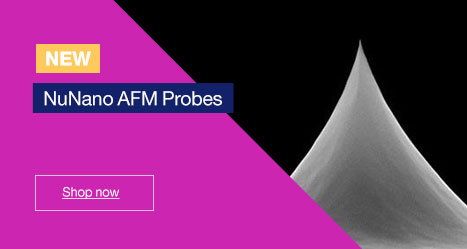It is still unclear when the first microscope was invented and who was credited with the invention. The general opinion is that a Dutch spectacle/eyeglass maker by the name of Zaccharias Janssen (1585-1632) invented and constructed a microscope sometime between 1590 and 1595. However, this ‘general opinion’ doesn’t add up- if Janssen was born in 1585 and he invented and constructed the first microscope, then he would have done so at the age of five! Another theory alludes to the later date of 1595 and that his father helped to construct the instrument. Or that he was born in 1580.
This fist microscope was a simple sliding tube giving between approximately 3X and 10X magnification. The eyepiece consisted of a bi-convex lens (i.e. both surfaces of the lens are convex) whereas the objective lens was a plano-convex lens (i.e. one flat and one convex side). Another claimant to the title of ‘inventor of the microscope’ was a German born spectacle maker called Hans Lippershey (1570-1619) who actually lived next door to Janssen in Middelburg in the Netherlands.
Then there’s Galileo! In 1609, Galileo Galilei (1564-1642) built a device which he named the ‘occhiolino’ (little eye). Giovanni Faber (1574-1629) was an anatomist, botanist and close friend of Galileo. They were both members of an Italian science academy (‘Accademia dei Lincei’) founded in 1603. Faber was very excited by Galileo’s new instrument and he is the person responsible for naming this instrument as the ‘mircosope’ from the Greek words ‘micron’ (meaning ‘small’) and ‘skopein’ (meaning ‘to look at’).
The history and mystery of the Leeuwenhoek microscopes
Antonie van Leeuwenhoek (1632-1732) is commonly known as the ‘Father of Microbiology’, but he also made many advances in the field of microscopy. Whilst working as a draper, he developed an interest in lens making. He was making tiny high-quality glass spheres which he used as the lenses in his microscopes. It is thought that he made around 25 microscopes and it is claimed that these offered magnification in the range of between 275 and 500X. Leeuwenhoek kept his microscope construction and lens making techniques very secret.
Mystery still surrounds his microscopes and there was an excellent article by Brian J. Ford in Laboratory News from February 20151 regarding some of his instruments which have recently come up for auction and subsequently disappeared. One was bought at Christies auctioneers in 2009 for over £300,000 supposedly by a representative of a European biosciences organisation. This was allegedly going to go on public display, but the microscope has disappeared. Then in 2014, a collection of items appeared on eBay which were dredged from a canal at Delft. The seller described one of the items as a ‘weird drawing instrument’, however, it was soon clear that this appeared to be an original Leeuwenhoek microscope. Shortly after, the items were removed from eBay and the vendor disappeared. Apparently a Spanish collector had offered to buy the whole lot for 1,500 Euros, but he never received the items and his money was refunded. It remains to be seen if these hugely important instruments ever turn up again.
A need for binocular vision
Throughout the hundreds of years of development of the instrument, microscopists had always desired to view specimens through a binocular set-up. The first stages of development of this configuration were not entirely satisfactory as the splitting of the final image resulted in halving the numerical aperture of the objectives. Ernst Leitz II (1871–1956) was the second son of the entrepreneur Ernst Leitz who founded the ‘Ernst Leitz Optical Works’ at the beginning of the 20th Century (later to become ‘Leica’). Ernst Leitz II realised that a physical beam-splitter was needed in a binocular configuration which would ensure that the performance of the objectives was unaffected when the image was split. This binocular tube design soon became the standard for all such configurations and the principles are still used to this day.
Inverted microscopes
The history of the inverted microscope is slightly more recent. John Lawrence Smith (1818-1883) was an American chemist and during his time as Professor of Chemistry at the University of Louisiana (which is now Tulane University), he invented the inverted microscope in the year 1850. He published this work in the American Journal of Science and Arts in 1852 with a paper entitled ‘The Inverted Microscope- a new form of Microscope; with the Description of a New Eye-piece Micrometer and a New Form of Goniometer for Measuring the Angles of Crystals under the Microscope’2.
Although the modern inverted microscope is primarily used for viewing live cells and tissue (usually in flasks or dishes), the invention came about to facilitate the micro-chemical research which Smith was undertaking at the time. He describes the problem in his paper;
“The great obstacle to chemical research beneath the microscope are two-fold; first, the necessity of manipulating in the limited space between the object-glass and the stage; and, secondly, the exposure of the most essential parts of the instrument to the vapors emanating from the re-agents employed, and the condensation of vapor on the under surface of the object-glass souring the view. A less important obstacle is the impossibility of heating a liquid or other substance while beneath the microscope. The only way by which these difficulties can be surmounted is to place the object-glass beneath the stage, and the object above it, with an optical arrangement of such a nature as to permit observation.”
In others words, the heating of chemicals on the stage would produce vapours which would lead to corrosion of the objectives! Although he alluded to the fact that his invention may have other uses, he was more concerned with heating and evaporation of chemicals than the viewing of living systems.
Stereo microscopes
Stereo microscopes are also known as stereoscopic or dissecting microscopes which is a more descriptive name for their purpose. The first pseudo-stereoscopic microscope was designed and built by a monk called Cherubin d’Orleans (1613-1697). In 1677 he made a small microscope with two separate eyepieces and objective lenses, though at the time, he was unaware of how the perception of depth was created by his invention. In wasn’t until 1852 that the English scientist and inventor Charles Wheatstone (1802-1875) first described the principles of stereoscopic vision. He published this as a paper in the Philosophical Transactions entitled ‘On Some Remarkable, and Hitherto Unobserved, Phenomena of Binocular Vision’3.
Around the same time, a further advancement in stereo microscopy was discovered by an American scientist called John Leonard Riddell (1807-1865). He published his findings in the Quarterly Journal of Microscopical Science in 1854 in his paper ‘On the Binocular Microscope’4. The difference with Riddell’s configuration is that the microscope used a prism system with a single objective- usually referred to as Common Main Objective (CMO) stereo microscopes. However, with the Riddell instrument, the image formed was reversed (and therefore still ‘psuedo-scopic’).
In the early 1890’s, an American biologist and instrument maker, Horatio S. Greenough developed a stereo microscope which was an alternative design to the CMO microscope. Much like the design which Father d’Orleans had made, Greenough’s microscope used two separate but identical optical paths. He approached the Carl Zeiss Company with his design where the Zeiss engineers changed the plans slightly- Greenough had designed a lens erecting system to ensure correct orientation of the final image, but at Zeiss, this was replaced with image-correcting prisms. To this day, stereo microscopes are still based on the ‘Greenough principle’.
- http://www.labnews.co.uk/features/deepening-mystery-of-disappearing-microscope/
- https://archive.org/stream/mobot31753002152418/mobot31753002152418_djvu.txt
- http://rstl.royalsocietypublishing.org/content/142/1.full.pdf+html
- http://jcs.biologists.org/content/s1-2/5/18.full.pdf+html
AUTHOR: Martin Wilson


